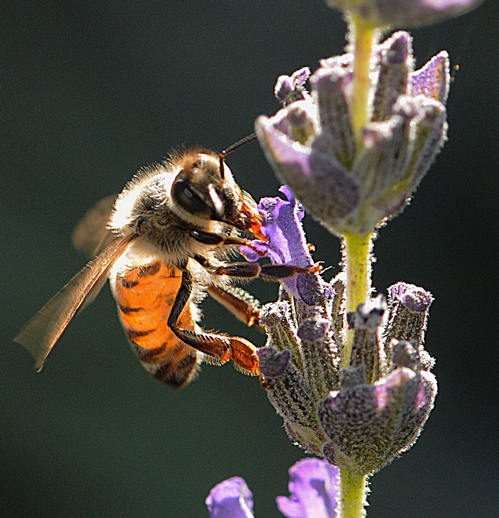Honey bees are involved in a unique "sting operation" utilizing their sense of keen smell to detect explosives and narcotics.
And now a scientist from the Los Alamos National Laboratory, New Mexico, will talk about the project on Wednesday, Oct. 21 on the UC Davis campus.
Robert Wingo, with the Chemical Diagnosis and Engineering of the Chemistry Division, will speak on “Explosives and Narcotics Detection by Monitoring of the Proboscis (Tongue) Extension Reflex in Apis mellifera (Honey Bee)" at 4 p.m., in 357 Hutchison Hall, UC Davis.
The one-hour event is sponsored by the UC Davis Department of Plant Pathology.
Wingo's lecture will be Webcast live as part of the pilot UC Seminar Network, which is Webcasting scientific seminars on three UC campuses: Davis, Berkeley and Santa Cruz. Viewers can link to it.
UC Davis entomologist James R. Carey, instrumental in launching the pilot program, is the former chair of the UC Systemwide Academic Senate University Committee on Research Policy.
What's the honey bee project all about?
In a news release issued Nov. 27, 2006, Los Alamos National Laboratory (LANL) news writer Todd Hanson wrote that scientists at LANL “have developed a method for training the common honey bee to detect the explosives used in bombs. Based on knowledge of bee biology, the new techniques could become a leading tool in the fight against the use of improvised explosive devices, or IEDs, which present a critical vulnerability for American military troops abroad and is an emerging danger for civilians worldwide.”
“By studying bee behavior and testing and improving on technologies already on the market,” Hanson wrote, “Los Alamos scientists developed methods to harness the honey bee's exceptional olfactory sense where the bees' natural reaction to nectar, a proboscis extension reflex (sticking out their tongue), could be used to record an unmistakable response to a scent. Using Pavlovian training techniques common to bee research, they trained bees to give a positive detection response, via the proboscis extension reflex, when they were exposed to vapors from TNT, C4, TATP explosives and propellants.”
The bee’s phenomenal sense of smell rivals that of dogs, according to Tim Haarmann, then principal investigator for the Stealthy Insect Sensor Project.
More information is available from the LANL news release.
LANL, a self-described "multidisciplinary research institution engaged in strategic science on behalf of national security," is operated by Los Alamos National Security, LLC, a team comprised of Bechtel National, the University of California, The Babcock & Wilcox Company, and the Washington Division of URS for the Department of Energy's National Nuclear Security Administration.
Attached Images:

The Tongue Has It